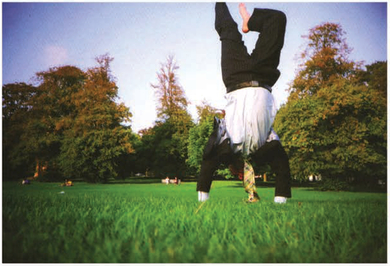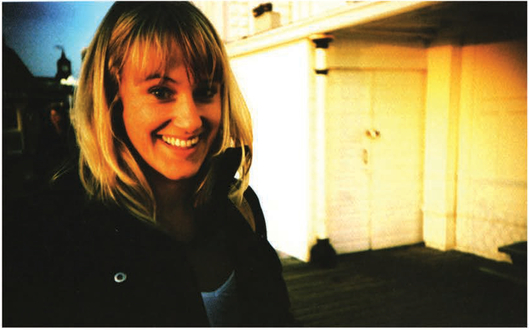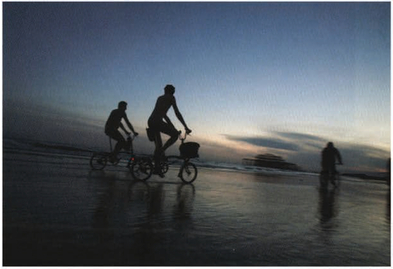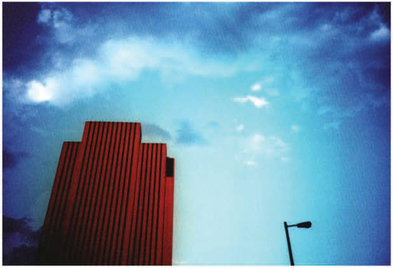23 Getting the right light
It's all in the timing
Kevin Meredith
The Idea
Photography is all about collecting light and projecting it onto film or a digital sensor. Without light there would be no photograph. It is important to consider the lighting conditions under which you are shooting, If you are using natural light, the time of day has a huge effect on what your final picture will look like, so think about when you will shoot when you are making plans.
Crashing Wave
You can see the yellow light characteristic of the golden hour in this photo.
The Ingredients
- ▶ Any camera
- ▶ Watch
The Process
Direction of light
It's not just the softness or hardness of light you have to consider, but also the direction from which the light is coming, it is tricky to take a portrait in the middle of the day, with no cloud cover, as the sunlight will be hitting the top of your subject's head rather than their face. This could also mean that their face will be in shadow. Even if the light is hitting their face, it will be hard light, which will produce strong shadows. You can get around this, by using a reflector. Reflectors are usually circles of white material with a ridged frame. They fold down so that they can fit in a camera bag, and the best part is they are cheap. Some people prefer to use fill flash (a mix of natural light and flash light), but that means fiddling around with a flash to get the right settings, and you also have to worry about the different color temperatures of sunlight and flash light. If you are using a reflector, you can just angle it to direct light onto your subject and use the in-camera metering to get a good exposure. The only drawback is that you need someone to hold the reflector.
I am a big fan of shooting on overcast days as this produces really soft light, and soft light produces shadows with soft edges, giving a gentle gradation of tones in an image. If you want that soft look and it's not an overcast day, you can always shoot in the shadows.
Nice and bright and sunny doesn't make the best conditions for photos. Unfortunately, for the ideal light, you need to be up really early.
The golden hour
Most photographers agree that the best times of day to shoot are around sunset and sunrise, The period around sunset and sunrise is often referred to as "the golden hour" or "the magic hour." Although it is called the "hour," in reality there is a period of around 15 minutes when the light is incredibly golden just before the sun dips below or rises above the horizon. This light can give you wonderful portraits, but as the sun is so low, it can be tricky to keep your shadow out of the photos. The color of light can vary wildly depending on weather conditions and on where you are in the world. It can range from yellow to red. If you plan to shoot during the golden hour, make sure you get to where you want to shoot in plenty of time-it can be frustrating to still be in transit as everything is turning golden. Sunset and sunrise times change by a few minutes each day, so remember to check them, Weather websites usually list these times.

Work Hard, Play Hard Photos taken an hour before sunset will have really soft light, hut it can he tricky keeping your own shadow out of the shot.

Golden Hour, Just More Golden This shot shows just why the golden hour is called the golden hour. The yellow tint is made stronger through the use of cross-processing

Blue Hour On a clear day the quality of light during the blue hour can help you capture amazing landscapes. You might have to shoot using a tripod to avoid camera shake, but this shot was taken on a Canon EOS 5D. which is pretty good in low light.

New York Skyscraper Sometimes the color effect will be red. which can make a really strong contrast with a deep blue sky.
The blue hour
This refers to the twilight period in the morning and evening, when it is neither fully light, nor yet in complete darkness. You are best off using a tripod at these times, but, depending on your camera, you can get away with shooting hand-held. When I shoot in the blue hour, I shoot on Shutter Priority mode, on the lowest speed I can use without camera shake. (See Shooting mode on page 286.) If you are shooting in the evening, as it gets darker, your shots will become underexposed. When this happens, I turn up my ISO sensitivity, but once you are at your maximum, it will soon be game over and too dark to shoot hand-held.]


